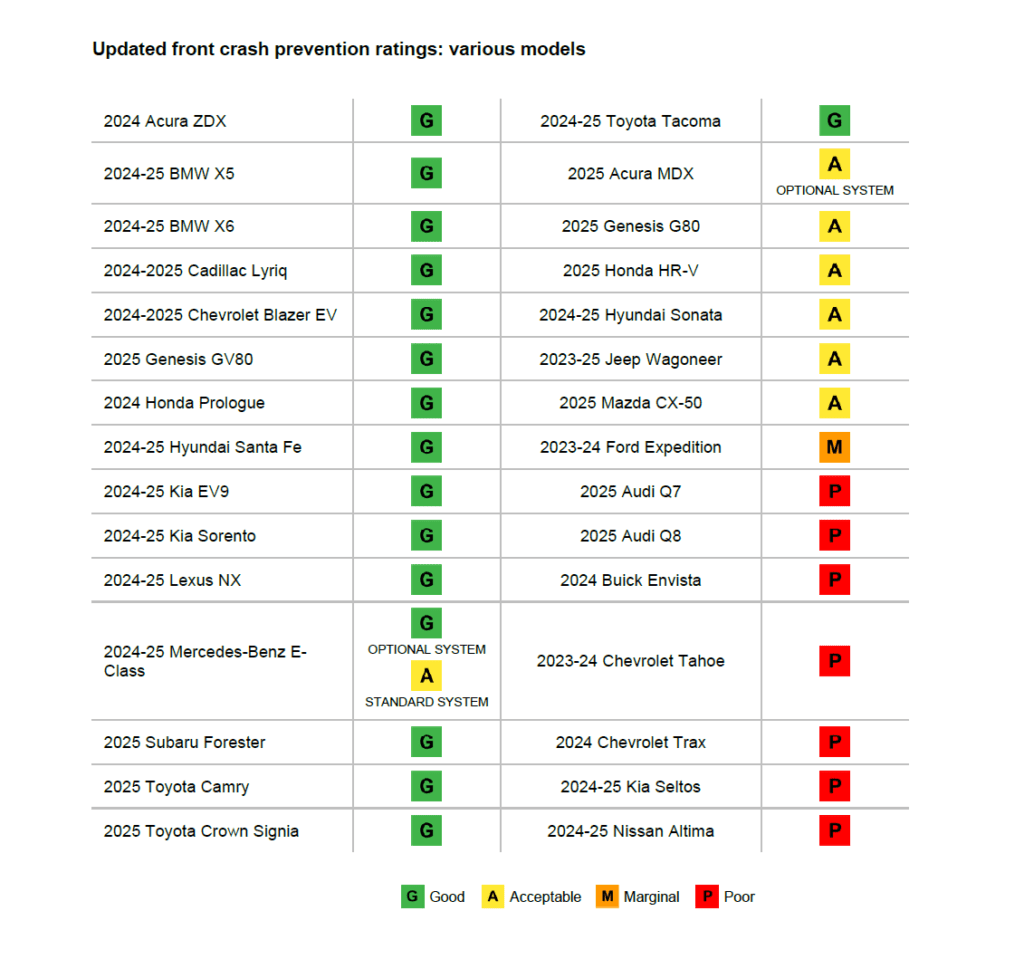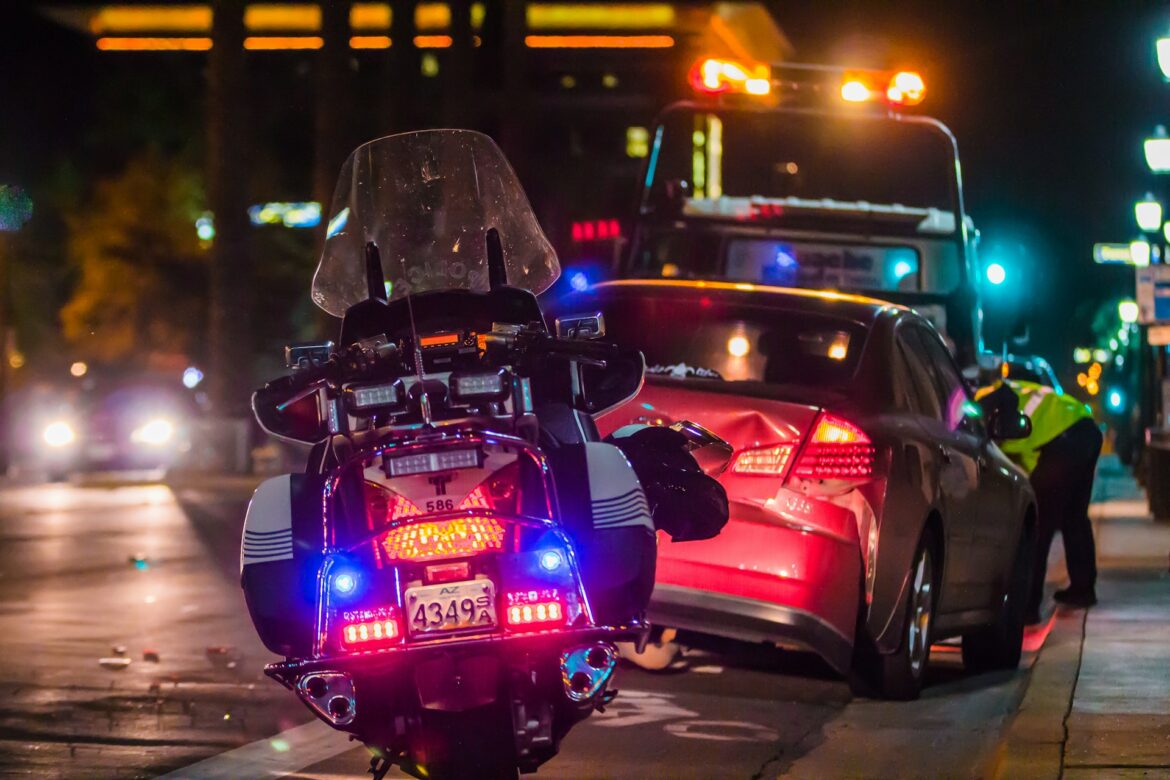Automakers have significantly improved automatic emergency braking (AEB) systems, with most new models showing better performance in preventing front-to-rear crashes, according to new test results from the Insurance Institute for Highway Safety (IIHS) in the U.S.
In the latest round of evaluations, 22 out of 30 vehicles earned a good or acceptable rating under the IIHS’s tougher front crash prevention test, introduced last year. The updated test requires systems to demonstrate effectiveness at higher speeds and in scenarios involving motorcycles and semitrailers, in addition to passenger cars.
“The rapid progress manufacturers have made to improve these vital crash avoidance systems is impressive,” IIHS President David Harkey said. “Vehicles that excel in this new test will save lives, as it addresses the most dangerous kinds of front-to-rear crashes.”
Fifteen vehicles, including the Acura ZDX, BMW X5, Cadillac Lyriq, and Toyota Camry, received the highest rating for their standard AEB systems. An optional system on the Mercedes-Benz E-Class also achieved a good rating. Another seven models, such as the Honda HR-V and Hyundai Sonata, received an acceptable rating. The Ford Expedition was rated marginal, while seven models, including the Audi Q7 and Chevrolet Tahoe, received poor ratings.
The IIHS introduced the revised test after previous evaluations saw nearly all vehicles receiving the highest rating. The updated assessment now includes trials at speeds of 50, 60, and 70 km/h, with vehicles tested against not just a stationary passenger car but also a motorcycle and a semitrailer. The aim is to better reflect real-world crash risks, including those that result in serious injuries or fatalities.
More than 400 people are killed annually in rear-end crashes with semitrailers, and motorcycle rear impacts account for over 200 deaths per year, according to IIHS data.
While most highly rated AEB systems performed well in stopping before impact in passenger car and motorcycle scenarios, some struggled in higher-speed tests. Motorcycle detection proved particularly challenging for lower-rated systems, with many vehicles failing to prevent collisions at 70 km/h. Some poor-rated vehicles did not slow down enough in tests to warrant further evaluation of their automatic braking capabilities.

“These results indicate that preventing crashes at higher speeds, especially collisions with motorcycles, remains a challenge for some systems,” Harkey said. “Motorcycles are a special area of concern because, unlike passenger vehicle occupants, riders have little protection from crash injuries.”
The IIHS awards points for systems that issue forward collision warnings at least 2.1 seconds before impact and for reducing speed significantly in braking tests. Warnings account for one-third of the score, while speed reductions make up the remaining two-thirds.
Vehicles with good-rated systems consistently stopped in time to avoid crashes in most tests. Acceptable-rated systems generally prevented collisions at lower speeds but struggled with higher-speed motorcycle scenarios. The poorest-performing vehicles failed to slow down sufficiently in multiple tests and, in some cases, did not issue timely warnings.
The results highlight progress in crash prevention technology while also pointing to ongoing gaps in protecting motorcyclists and mitigating high-speed collisions.






